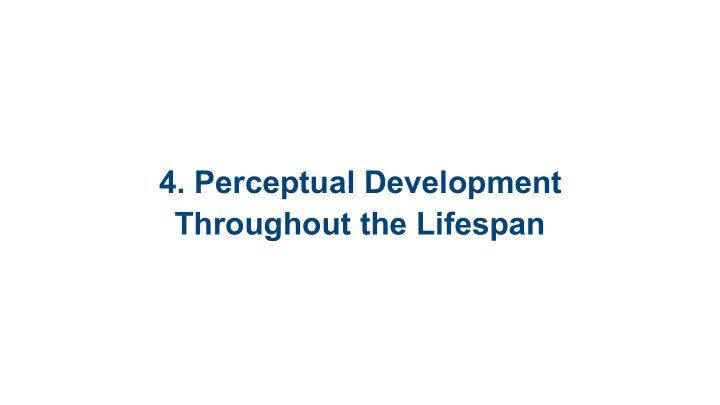



4. Perceptual Development Throughout the Lifespan
4.1 Sensorimotor Activities 4.2 Sensitive Periods 4.3 Sensory Deprivation 4.4 Habituation 4.5 Sensory Acuity
4.1 Sensorimotor Activities
Early perception • Infants perceive with hands + mouth + eyes + ears • Intermodal perception • Example: info from mouth or hands recognized by eyes
Early perception • Objects not recognized as unified until parts seen moving together • “Visual cliff” proves depth perception (evolutionary?) • Object permanence after ~8 mo.
4.2 Sensitive Periods
Sensitive periods: opportunity windows • Sensitive period = time when certain experiences ideal for development • Examples in infancy: • Language learning • Scooting, crawling before walking
4.3 Sensory Deprivation
Sensory malnutrition • Related to sensitive periods in infancy • 2 Sources: • Visual/auditory problems • Lack of tactile sensation (being touched)
Sensory malnutrition • Harlow’s surrogate mother experiment • Monkey infants socially maladjusted, depressed • Eastern European infant orphanages 1990’s • Untouched infants growing up with social, mental deficits
4.4 Habituation
Programmed to ignore • Fish know nothing about water • Sensory novelty stimulates, but repetitive input gets ignored – “tuned out” by brain • Helps us cope in setting • Makes us adaptable in new setting
4.5 Sensory Acuity
Developing acuity • Visual ~8 to 18 years • Auditory ~10 to15 years • Acuity declines after that • Training and/or necessity can enhance acuity • Examples: athletes, musicians
Recommend
More recommend